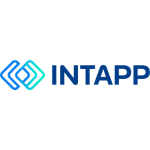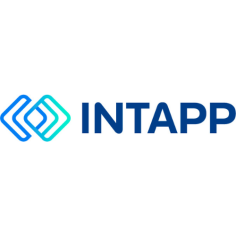Leveraging key-client programs for better service levels and higher profitability
Key-client programs build the foundation for a better client experience and increased profitability for your firm. In fact, firms that perform top-client analysis and focus on cross-selling and up-selling existing clients enjoy a favourable return on investment. From the legal-finance perspective, matters related to current clients — especially key clients — close faster at significantly lower cost, which ultimately improves profitability through improved operational efficiencies.
Formalised key-client planning amplifies the impact of your firm’s key-client program because key-client matters are significantly more likely to close than new-client matters — and bill significantly more. The billing software tells the story: Top-client analysis shows a significant portion of new business — for some firms as much as three-quarters — stems from existing clients.
Relying heavily on key clients specifically to feed their pipeline and revenue stream, some firms earn half their total revenue from key clients, which demonstrates that key-client programs have the potential to be a strong growth driver. Compounding this point, the growth rate for key-client accounts generally outpace many firms’ overall growth rate.
Successful key-client programs are mutually beneficial, creating value and benefits for both clients and firms; read on to learn more about creating the infrastructure required to extract maximum value from a legal-finance point of view.
Selecting key-clients
Traditionally, firms looked to the billing-software readout to gauge suitability for participation in their key-client programs — things like total billings and revenue weighed heavily on the decision. However, when firms limit their assessment to lagging indicators, they’re leaving opportunity on the table.
Best-in-class key-client program portfolios augment historical metrics with leading indicators that evaluate growth potential, which surfaces both new and dormant opportunities. Performing sophisticated analysis requires the data architecture needed to track both high-growth clients and manage established relationships.
Firms using marketing tools that augment the billing-software readout — like Intapp CRM — enjoy the advantage of solid growth trajectories, which ultimately builds sustainable competitive advantage.
Building teams
Successful key-client programs start with a defined vision and a diverse team. You’ll want to draw from a range of skill sets and experience, and include a mix of commercial partners and associates, business development talent, and industry experts. Partners that take on the leadership component for key-client teams typically serve as the point person for client escalations and are ultimately responsible for ensuring that key clients receive best-in-class service.
These partners need to not only supervise client service, but also forge strong relationships with each other. With key clients distributed globally, firms need to build a solid network for both solving on-the-ground issues in local jurisdictions and accessing industry and subject-matter expertise quickly and easily. For routine client management, partners typically work with business-development staff to identify business-development opportunities and surface relationship insights.
Most firms build their key-client programs gradually, starting with top-tier accounts and expanding coverage over time. To provide a noticeably elevated level of service, firms tap their industry experts to track trends, opportunities, and risks. With the dedicated staff in place to perform these functions— and the right technology — firms can cross-pollinate insights across key clients with similar interests and concerns and provide tactical support for key-client initiatives.
Successful key-client programs rely on firmwide partner buy-in. To secure support and resources, marketing and business development teams need to build a strong business case for launching a key-client program and committing to the ongoing investment to maintain and grow the initiative. Leadership will expect clearly defined goals and key performance indicators (KPIs) to measure success and justify the investment.
Executing key-client plans
Firms with key-client programs in place benefit from increased revenue, higher profitability, and reputation enhancement resulting from working with prestigious clients. Achieving these benefits hinges on delivering positive outcomes for clients participating in the program, which requires formalised planning.
Key-client planning starts with investing the time to discuss and document the client’s strategic objectives, which ensures that you and your key client are on the same page on priorities and what defines success. Incorporating these insights into the key-client plan helps manage expectations and keep both parties on track.
Client-relations representatives serve as advocates for their key clients, focusing on proactive outreach — things like sharing industry insights, competitive activity, and best practices — to build trust and loyalty. Key clients also appreciate a noticeably elevated level of service associated with volume discounts, dedicated hotlines, and innovative fee structures.
Investing in technologies
Although many firms are running key-client programs, very few have the technologies required to optimise their key-client methodology to maximum advantage. Data-driven business development strategies strengthen key-client relationships; however, most firms lack the visibility throughout the client lifecycle to capture, curate, and connect client data points to proactively predict their needs with confidence.
Firms that struggle with siloed data and workflows find themselves at a competitive disadvantage when pitching new business; they also struggle to keep up with clients’ shifting demands and expectations. Firms that have technologies in place to capture client intelligence are in a strong position to capture incremental market share.
Further, firms that make strategic investments in technology that provide global firmwide access to a centralised data repository and timely insights are better prepared to achieve the collaboration required to deliver superior pitches, identify new opportunities for up-sell and cross-sell. Further, these firms can pull together multidisciplinary teams quickly and easily, and close new business in a more cost-effective fashion.
Fuelled by intelligence and purpose-built for you, OnePlace Marketing & Business Development helps you capture, harness, and activate your data to successfully support marketing and business development effort throughout the connected client-engagement lifecycle.
To learn more, access the full report, watch the webinar on-demand, and read the case study.



